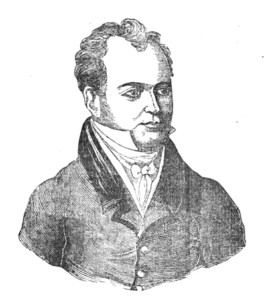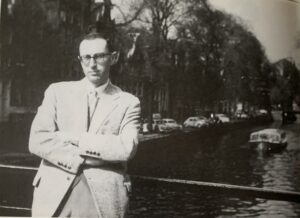

Margaret Chappellsmith was a devotee of the socialist and secularist ideas of Robert Owen, becoming one of the Owenite movement’s most prominent lecturers. Drawn especially to the possibilities of socialism for women’s emancipation, Chappellsmith spoke widely on topics ranging from currency reform to divorce. As a woman, she drew particularly vitriolic criticism for doing so, but remained actively committed to her principles to the end of her life.
The Owenite principles espoused by Chappellsmith and others were a notable influence on the development of humanist ideas in the United Kingdom and internationally, with secularism, social reform, and cooperation forming their basis.
Relatively little is known about Margaret Chappellsmith’s early life. Born Margaret Reynolds in Aldgate in 1806, her family was probably upper working class. Like many 19th century freethinkers, Chappellsmith grew up within the Church of England, becoming (following devoted Biblical analysis) a Baptist, and remaining so into adulthood. Her introduction to radical politics came first from reading Thomas Paine and William Cobbett, then the writings of Robert Owen, and by 1839 she was employed as a lecturer for the Owenite movement.
Margaret married John Chappellsmith, an artist and fellow Owenite, in August 1839. Although critics often targeted her assumed licentiousness and sexual ‘immorality’ (partly deduced from her speeches in favour of divorce), the marriage was in fact a devoted and happy one, marked by John’s total support of his wife’s activities and the couple’s shared values.
The Owenite movement was made up of many members of the working class, including a large number of women. The disdain for lecturers and their ‘motley’ audience exhibited by an often unsympathetic press is clear from contemporary reports. Historian Barbara Taylor records a ‘hostile but very interesting’ description of Chappellsmith and her audience, which appeared in 1839. The writer described
a ‘motley company’ including ‘soldiers… black women… ancient dames of other hues…’ Margaret herself he described as a ‘person of diminutive stature, with a Jewish face and very bold withal’. She suffered from a speech defect, he claimed, and also attempted to disguise her working class accent.
Descriptions like these demonstrate a horror not only of Chappellsmith herself, but also of the diverse, working class audience who were being exposed to her radical ideas. This portrayal stands in marked contrast to a description of a lecture she gave at the London Mechanics’ Institute in January of the same year, on the writings of William Cobbett. Of this the Morning Advertiser reported that they had ‘rarely observed a deeper impression produced on an audience than was effected by the unassuming manners… and the gentle but clear and judicious elocution which was displayed on the occasion.’
Along with George Jacob Holyoake and Emma Martin, Chappellsmith was an active member of the Anti-Persecution Union, founded in 1842 to help in defending individuals accused of blasphemy and blasphemous libel. Its object was ‘to assert and maintain the right of free discussion, and to protect and defend the victims of intolerance and bigotry’. Of her own unbelief, Chappellsmith was clear. In 1837, she wrote that to her it seemed ‘likely some discoveries may be made that will prove the race to be the result of a gradual progression during an immense period of time, from a simple animal.’ To this, and to the existence of evil, she was led to deny the existence of a supreme ruler or creator. D. M. Bennett (founder of the journal Truth Seeker), wrote that following this, ‘she was satisfied that it is only important to know the physical existences that surround us, how they afflict us, and how they may be used for our benefit.’ This belief in scientific examination, combined with human reason and compassion, epitomised Chappellsmith’s humanist approach to life and society.

In 1850, Margaret and John Chappellsmith emigrated to Indiana, likely drawn by the settlement at New Harmony, founded (but by then left) by Robert Owen almost twenty five years earlier. Here, the Chappellsmiths each contributed to the community that remained, with John undertaking geological illustrations for its founder’s son, Robert Dale Owen, and Margaret writing almost 300 articles for the radical Boston Investigator.
Margaret Chappellsmith died at New Harmony in February 1883.
According to Sara A. Underwood, Margaret Chappellsmith was in her own lifetime ‘thoroughly and enthusiastically identified with the cause of Freethought’ in both the UK and America. As a lecturer for the Owenite cause, she took a vision of a secularist, egalitarian society, and layered it with feminist arguments against the oppressive teachings of Christianity and the sexist workings of the law. As a woman, Chappellsmith was targeted with particular vitriol by opponents of her views on religion and politics, and for her audacity in speaking publicly about them. Though little known today, in advocating for a secular society, informed by science and guided by compassion and equality, Chappellsmith epitomised a humanist outlook which inspired generations after her, and continues to characterise the life stance of humanists today.
Margaret Chappellsmith in The World’s Sages, Thinkers and Reformers by M. D. Bennett (1878)
Eve and the New Jerusalem by Barbara Taylor (1983)
Main image: Margaret Chappellsmith, 9 May 1872, reproduced with the kind permission of Simon Howard

The Progressive League was an organisation dedicated to the advancement of scientific humanism, founded by author H.G. Wells and philosopher […]

Atheism, unadulterated and undisguised, was diffused into every corner of the land, and the bold voice of the conscientious unbeliever […]

‘Being Rational About Being Gay’ was a talk given by activist Antony Grey (Anthony Edgar Gartside Wright) for the Gay […]

I have been the more bold in exposing my opinion because I believe it to be the dictates of truth […]